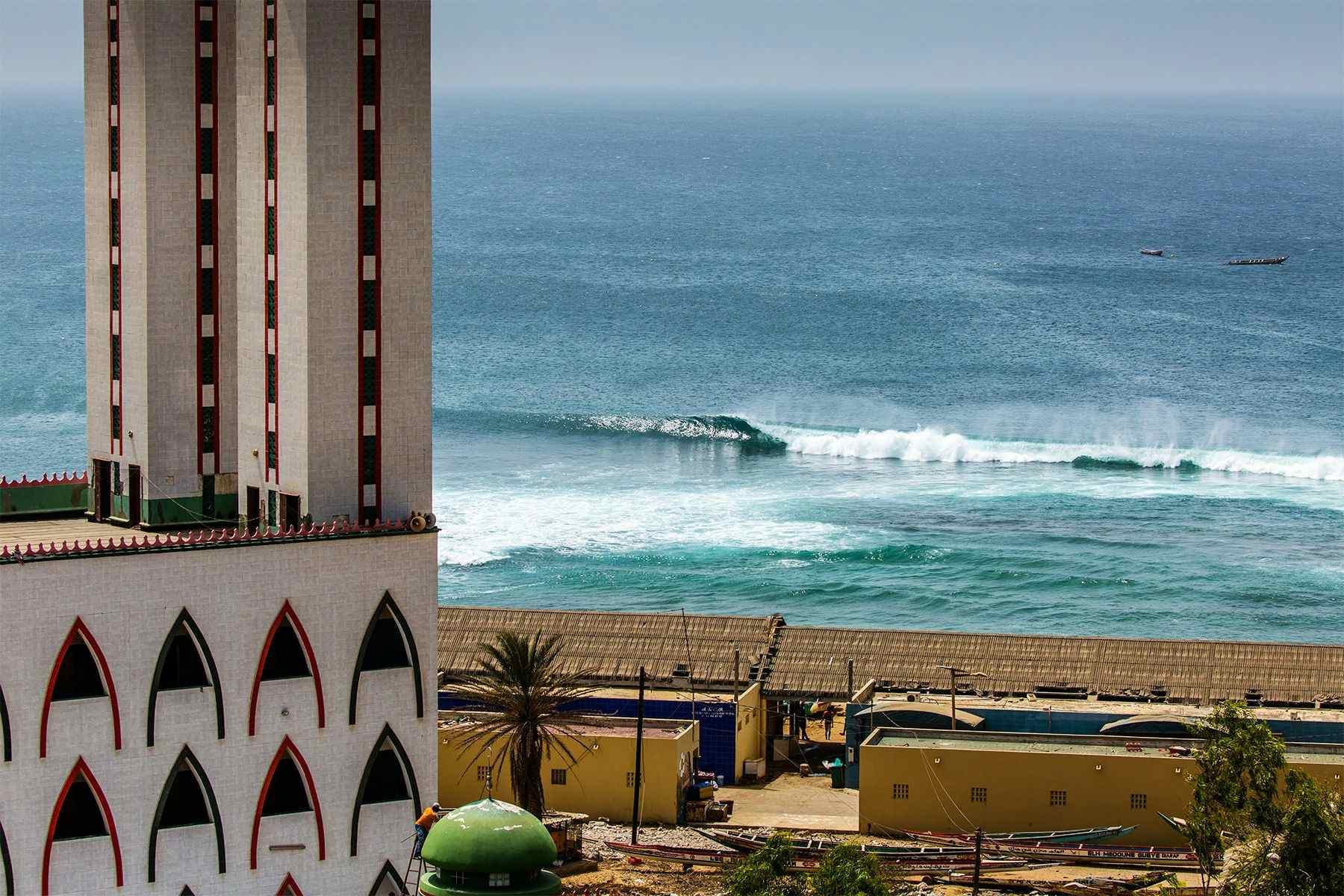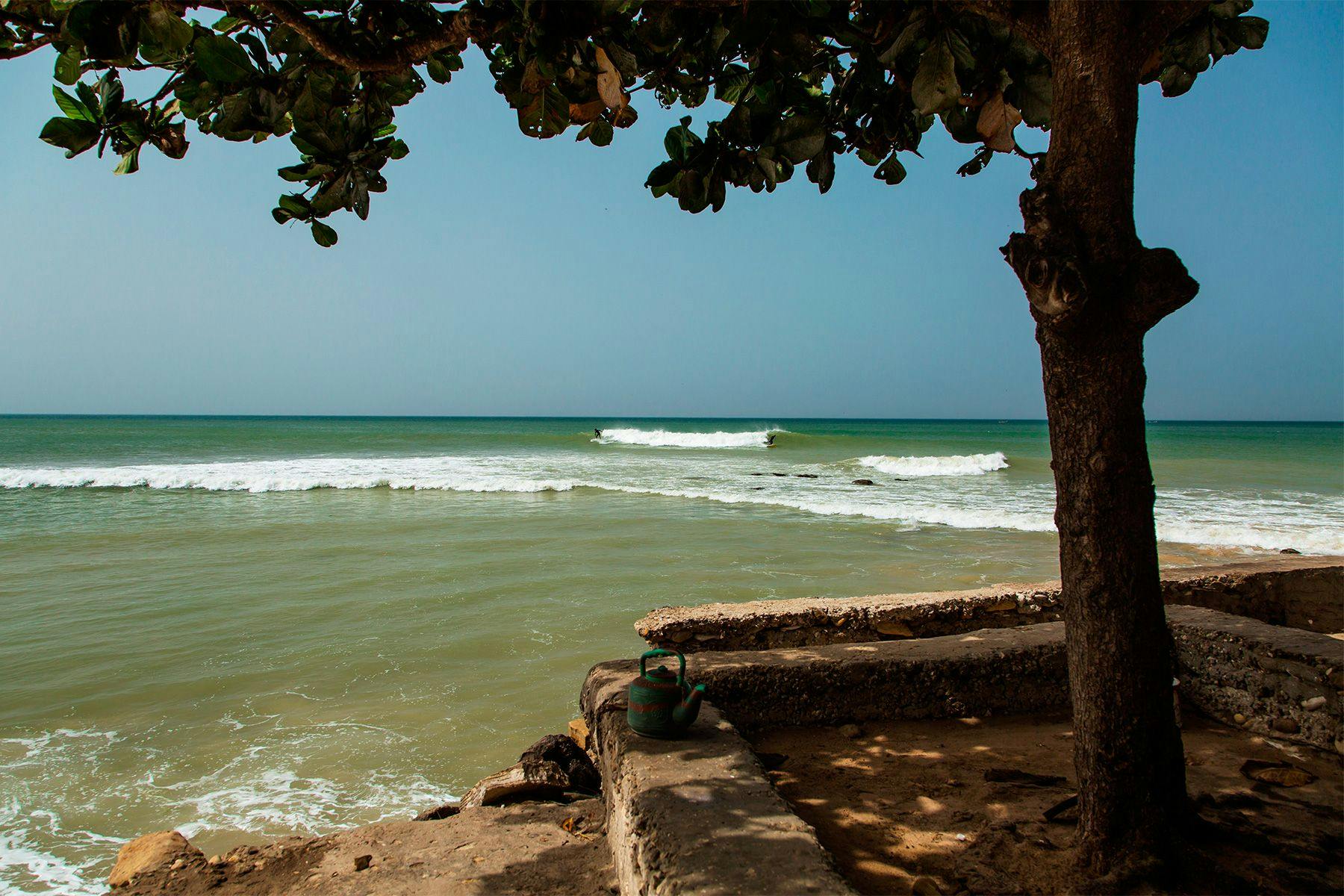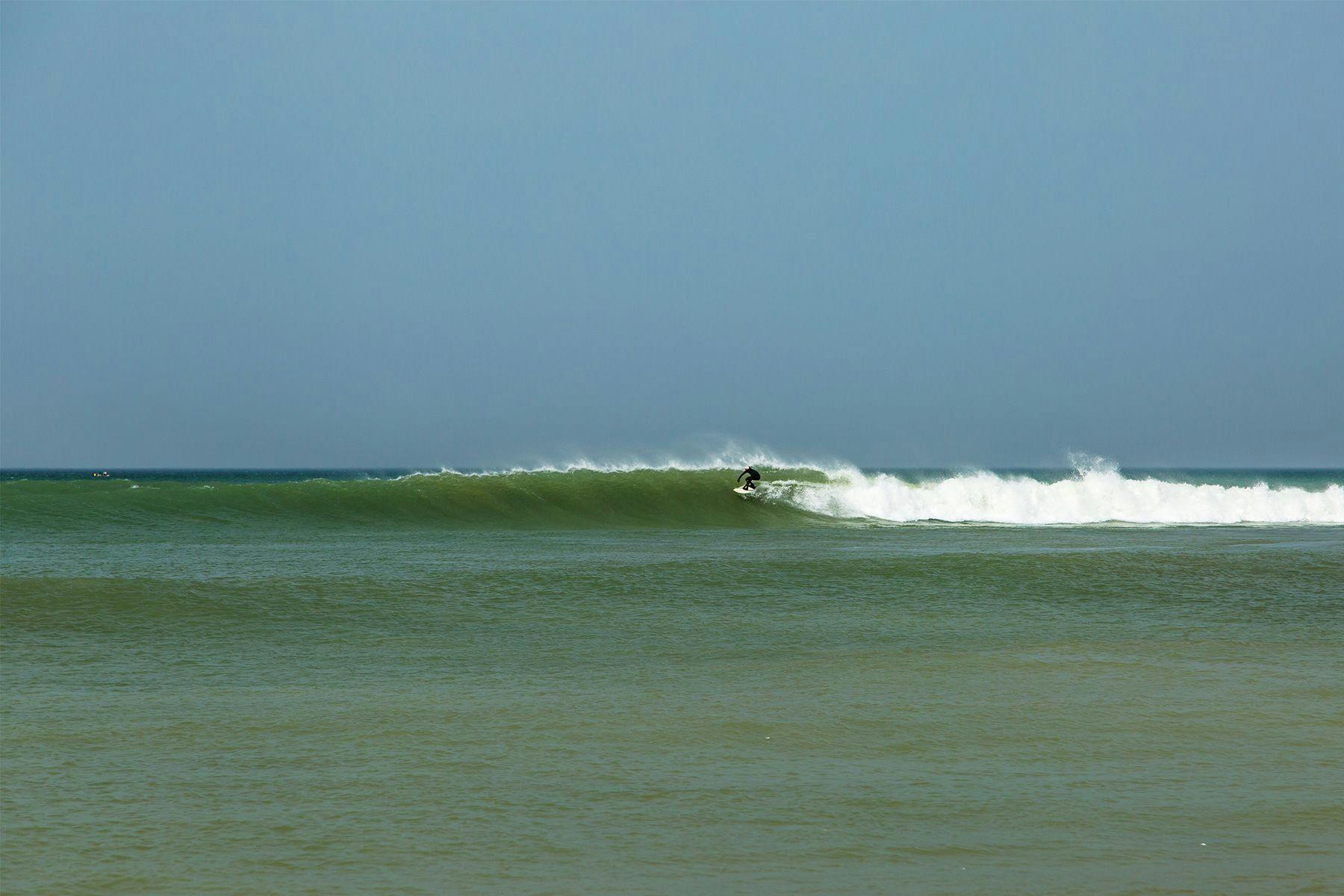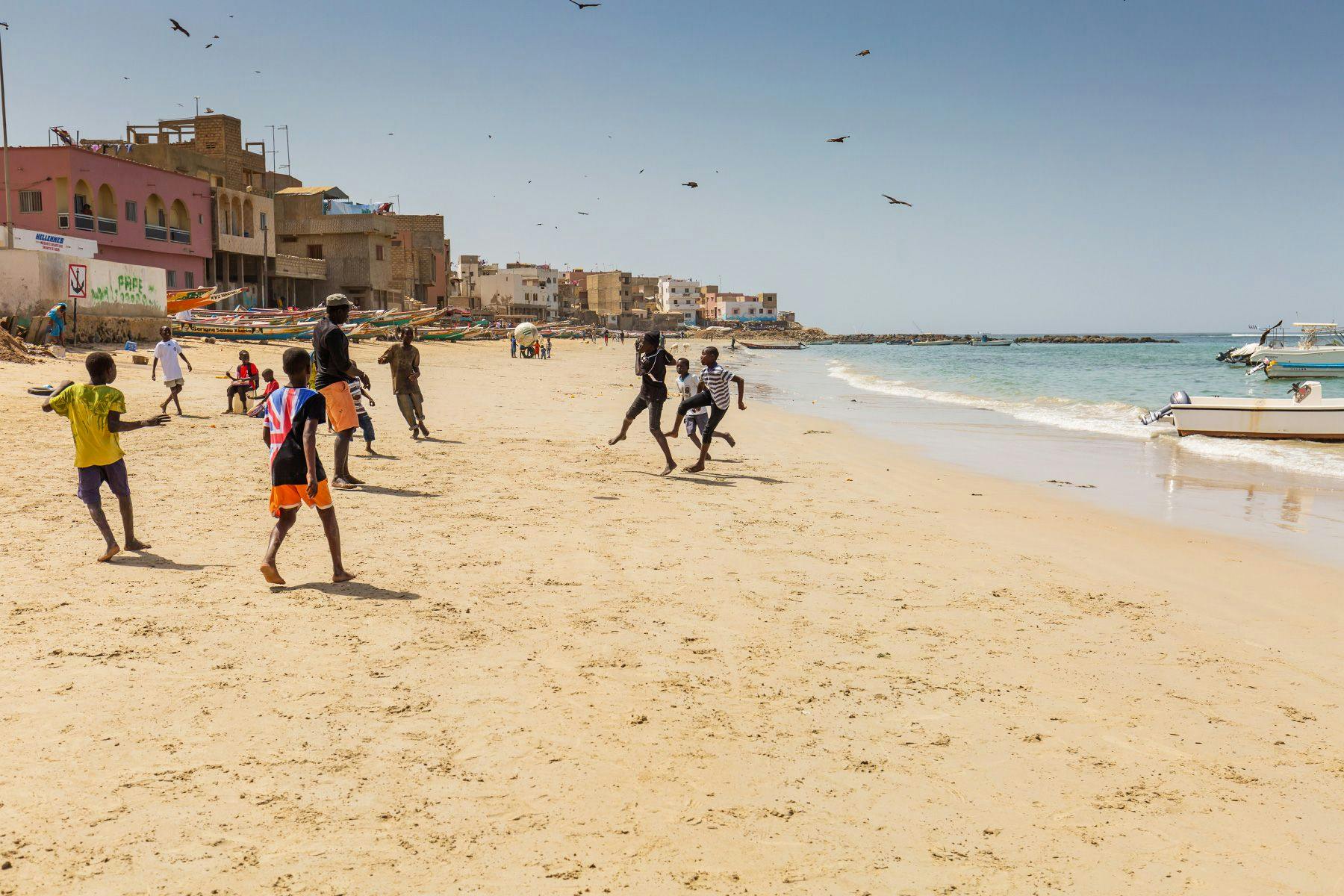TravelDeparture Gate: Dakar, Senegal

Surfers got their first look at the quality of waves in Senegal way back in 1966, when Robert August and Mike Hynson walked down the front steps of the Hotel N’gor and paddled out to ride the right that broke off the western corner of N’gor Island. Since then surfing has taken root and grown here, but not exploded in the way that it has in other locations visited by Brown et al. which is surprising given the high quality and variety of waves within walking distance of each other in Dakar alone.
Sticking out into the Atlantic, Senegal’s Almadies Peninsula on the edge of its capital city Dakar is the westernmost tip of continental Africa. Open to swells from the North in winter and South in summer, it has over 180° exposure to whatever waves the Atlantic Ocean produces whilst the consistent “Harmattan” trade winds blow from the north and northeast (offshore on the southwest coast) all winter.
A former French colony that gained its independence in 1960, the Republic of Senegal remains one of the most stable democracies in Africa. French is still the official language (although most Senegalese speak their own ethnic language primarily, with Wolof being the lingua franca in Dakar) and there are many French expats and visitors. Senegal was declared to be free of the Ebola virus disease by the World Health Organisation on October 17th 2015.

The Almadies Peninsula has it all in terms of waves. Starting in the northeast of the peninsula, Yoff Beach is probably the softest and most user friendly spot; a long, northwest facing stretch of beach that picks up most swells, Yoff offers soft beachbreak waves and a bit of isolation if you wander along and find your own peak. Further west on the north-facing coast is N’Gor Island, the spot made famous by The Endless Summer. N’Gor Island lies a few hundred meters offshore, blocking any swell from making it to the beach on the mainland but with a right and left breaking over reef on either side of the island. The right here is the prime option, but only just, and is incredibly consistent although easily affected by the trade winds that blow each morning in the winter months. There is a surf camp on the island and a small village, however it is certainly much quieter and slower paced than the nearby mainland, part in thanks to the lack of mains electricity (although the surf camp has solar panels).

Back on the mainland, past the boulder and reef rights and lefts of Baie des Carpes, is Club Med. Found, somewhat unsurprisingly, in front of the old Club Med, this spot is the most westerly on the African continent, and it doesn’t take much swell to get it going, with fast, heavy rights barreling over an urchin-covered reef. Now on the south side of the peninsula, where the trade winds blow offshore, winter swells have to wrap around the point and breaks here tend to be more powerful. A short way south of Club Med is Vivier, another short right and left reef, before Les Mamelles lighthouse on Cap Vert, on the other side of which sits Senegal’s primo surf spot. Ouakam is instantly recognisable thanks to the twin minarets of the striking mosque that backs the beach. Out front is an a-frame reef with a small take-off zone which needs a fair size swell to wrap around the peninsula before it starts to break. Both the left and right barrel consistently and allow an easy entry, although it’s a fast wave and requires some skill to negotiate successfully. Ouakam is well known not simply because of the distinctive mosque, but because it is Senegal’s best wave, and the fact that it doesn’t break as often as it’s north coast neighbors means that when it is working, you don’t want to miss it.

Senegal manages to tick a lot of boxes for a long-haul surf trip destination, with good, consistent and largely uncrowded waves on the edge of a captivating African city. The best season for surf is in winter, which means a wetsuit, however it is dry and the temperature sits comfortably in the twenties. Unless you are undertaking an epic overland journey (London to Cape Town, Paris to Dakar, something like that) it is likely that you’ll have to fly to Dakar, and most probably via Europe, however this simply helps keeps the crowds low. Should you wish to take some time away from the waves, perhaps because it’s the weekend and the sun has set, then Dakar’s famed music scene and nightlife will provide plenty of distractions; live music is everywhere, and the infectious rhythms of mbalax (a 1970s mix of Cuban rhythm and West African drumming) and it’s stars such as Youssou N’Dour or Orchestra Baobab are as good a reason as any you’ll ever have for missing the dawn patrol. If you need to wait out the wind then the UNESCO World Heritage Site of Île de Gorée (the sobering former slave island) or bustling markets of Kermel are worthy cultural detours. However, if you time it right then you could happily spend an entire visit to Senegal surfing several times a day, moving between spots to make the most of the conditions on this small peninsula.
WHERE: Fly to Léopold Sédar Senghor International Airport (DKR)
WHEN: September to March
WHY: A range of easily accessible and uncrowded good and very good waves, set in a vibrant African city.
HOW: A standard shortboard, and something with a little more volume as back-up.
Our thanks to Andy Grainger (@andygraingerphotography) for sharing his fantastic photography with us.